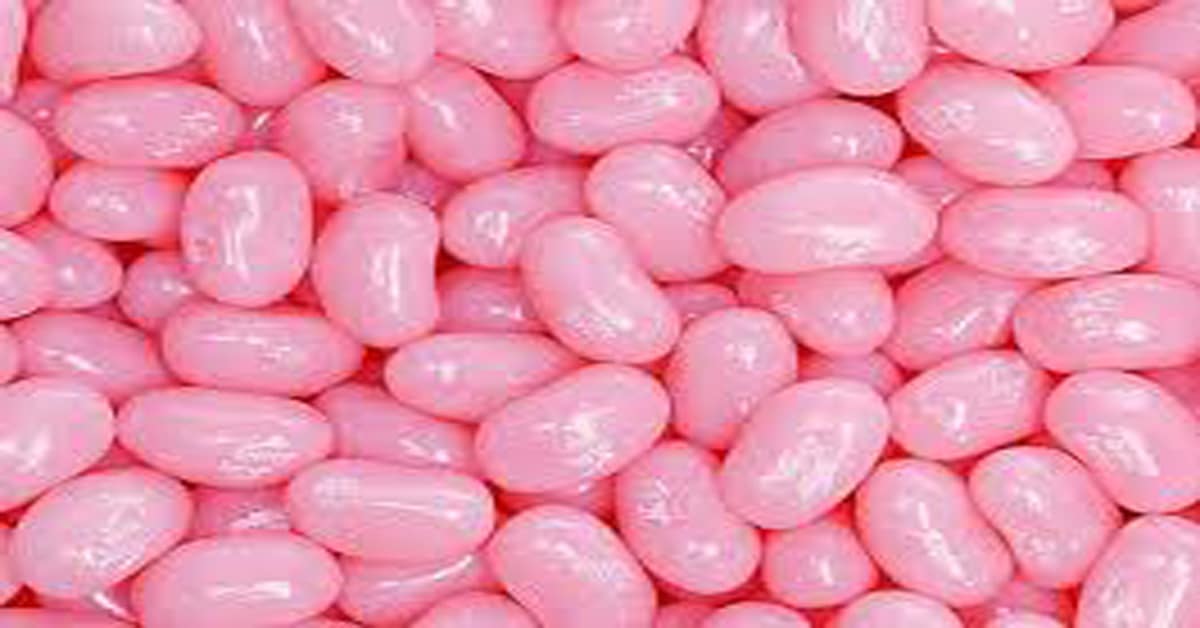Pink Candy – A Sweet Journey through the World of Pink Treats
Organizing a flawlessly pink event? Then you must be looking for the perfect sweets for your celebration. The color pink is often associated with love, joy, and happiness. Therefore, we believe pink candy is ideal if you’re looking for an amusing experience. In the modern candy industry, there are countless types of pink candy available to satisfy any sweet tooth.
So, let’s learn more about pink candy and its varieties and discover which one is your favorite.
Please leave a review or any memories of this snack in the comments at the bottom of this page. Thank you!
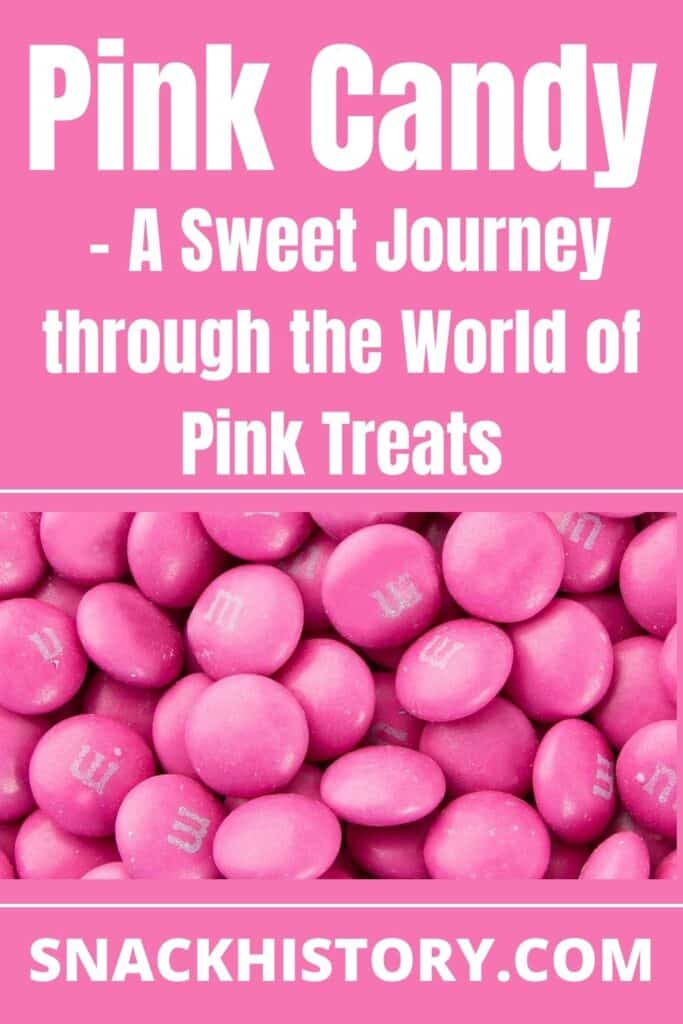
7 All-time Favorite Pink Candy Brands
1. SweeTARTS
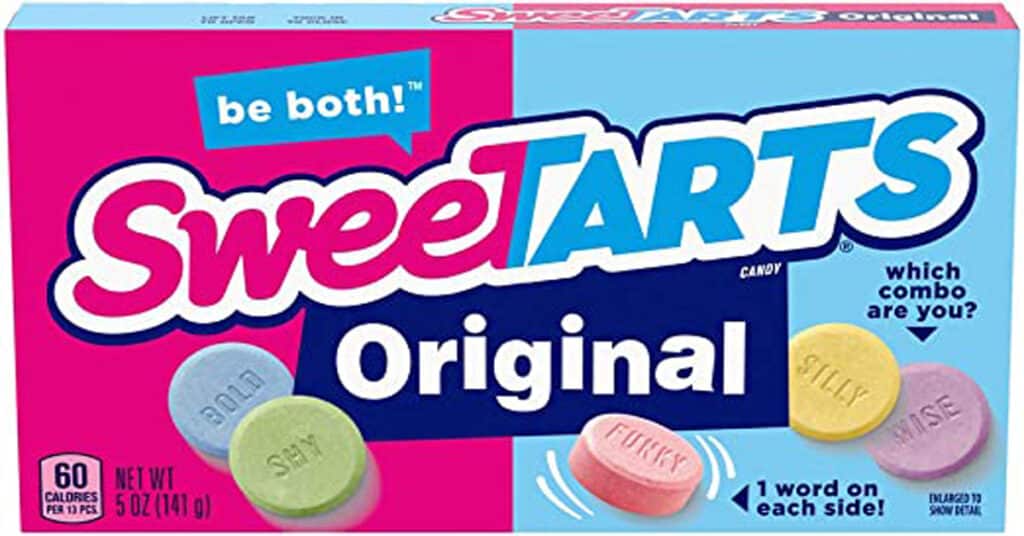
SweeTARTS is a classic candy brand manufactured by Nestle that has been around since the 1960s. Originally produced by the Sunline Candy Company, SweeTARTS are small, tart, and sweet candies that come in various flavors, including a pink grapefruit variety.
Pink SweeTARTS are made from a combination of ingredients, including sugar, corn syrup, and dextrose. They also contain various flavorings and colors to give them their distinctive taste and appearance. Pink SweeTARTS are vegetarian-friendly and free from common allergens such as nuts, wheat, and dairy. This pink candy can be enjoyed on its own as a sweet treat or used as a decorative element in baked goods or other desserts.
In addition to the traditional pink candy color, SweeTARTS are available in a range of other colors and flavors, including blue, green, and purple. Pink SweeTARTS, however, remains a popular choice due to their sweet and tangy taste and iconic pink hue
When SweeTARTS was first created, the term “SweeTARTS” was already being used by another company. The SweeTart company in Dundee, Oregon, sold fruit that had been caramelized or glazed. Despite early successes, the company was unsuccessful in its 1964 effort to sue Sunline Company for using the word “SweeTARTS” on its product. Due to lack of use, the initial patent was no longer legitimate, and The Sunline Company won the legal battle.
Due to the presence of citric acid in the sweets, they have an acidic taste. Therefore, you can continue eating sour sweets despite the pain in your mouth and inner cheek. The candies are the size of pills and are easy to consume.
2. Haribo Marshmallows
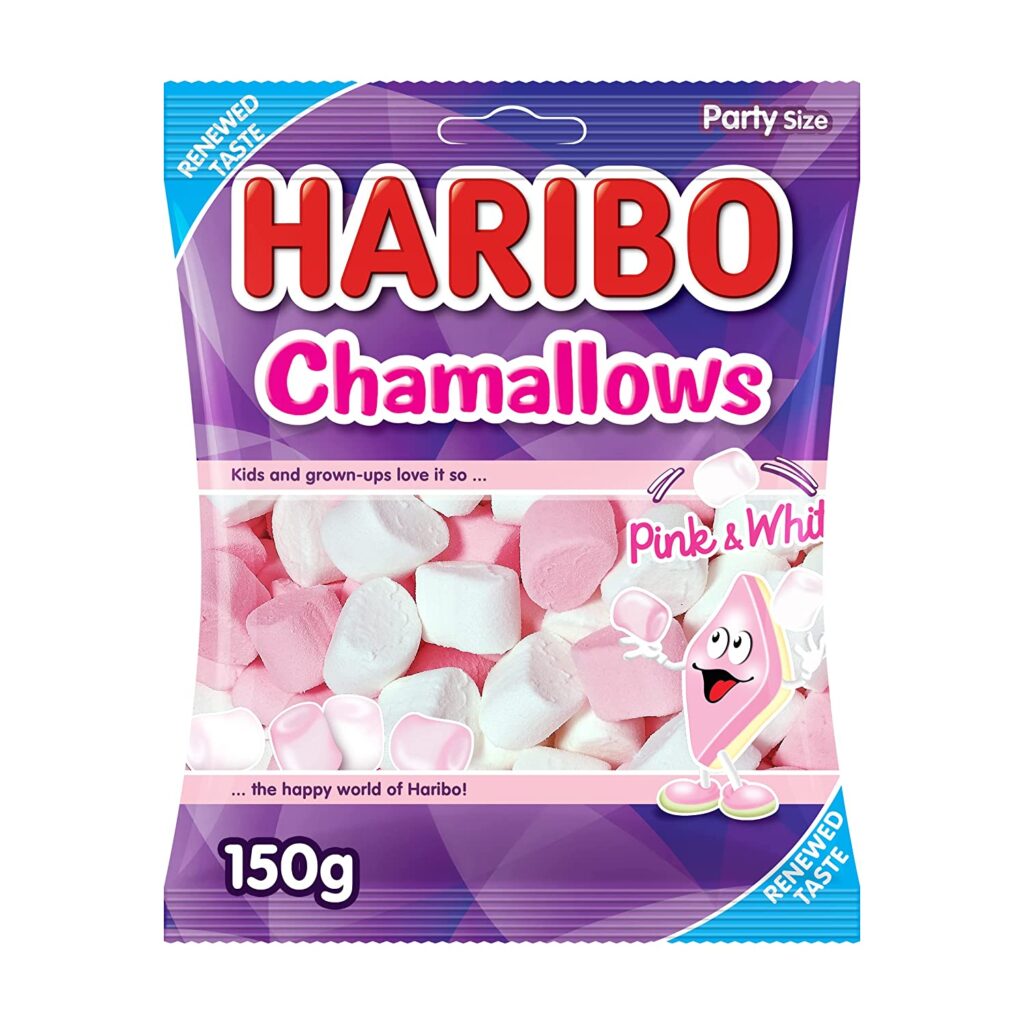
Pink Haribo candy is a type of pink marshmallow produced by German confectionery in the 1920s. The candy is small, chewy, and colored pink. Candy is made from a combination of ingredients, including sugar, glucose syrup, gelatin, and various flavorings and colors.
The marshmallows were initially marketed as a luxury product and sold in small packages. Over the years, Haribo expanded its marshmallow product line and began to offer a variety of flavors and shapes, including bears, hearts, and stars.
In the 1980s, Haribo introduced its Chamallows line of marshmallows, which featured a softer, creamier texture and a wider variety of flavors, including vanilla, strawberry, and chocolate.
The Chamallows line quickly became popular and is now one of the company’s most well-known products.
This pink candy is known for its sweet and fruity flavor and its soft and chewy texture. It is a popular candy for sharing and is commonly found in small bags or larger containers.
3. Peeps
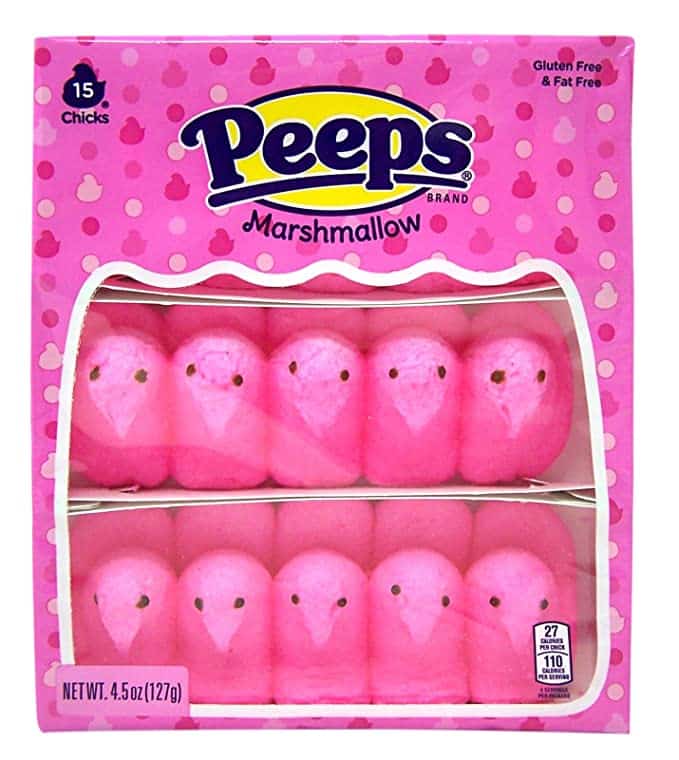
Peeps are a marshmallow candy that is most commonly associated with Easter. They were first produced in the 1950s by the Just Born candy company, which is based in Bethlehem, Pennsylvania.
In addition to the classic chick and bunny shapes, Peeps now come in a wide variety of flavors, including vanilla, strawberry, chocolate, and even more exotic options like cotton candy and sour watermelon.
While they are most popular around Easter, Peeps are now produced year-round and have even been expanded into other products, such as Peeps cereal and Peeps-flavored coffee creamer. Peeps are known for their iconic chick and bunny shapes, which are popular around Easter time, although they are now available in various shapes and colors throughout the year.
The brand stuck to the original flavor, which was always just marshmallow, up until 1999. This indicates that for about 50 years after Peeps Marshmallow manufacture started, the original marshmallow was the only choice.
Vanilla, strawberry, and chocolate were introduced to the lineup of Peeps tastes beginning in 1999 and continuing through 2002. Traditional favorites are still preferred. Before they even started switching tastes, the firm began to provide various color options. Other than yellow and pink, the company now has lavender and blue additions as well. Another alteration that wasn’t implemented until many years after the initial ideas was this one.
4. Jelly Beans
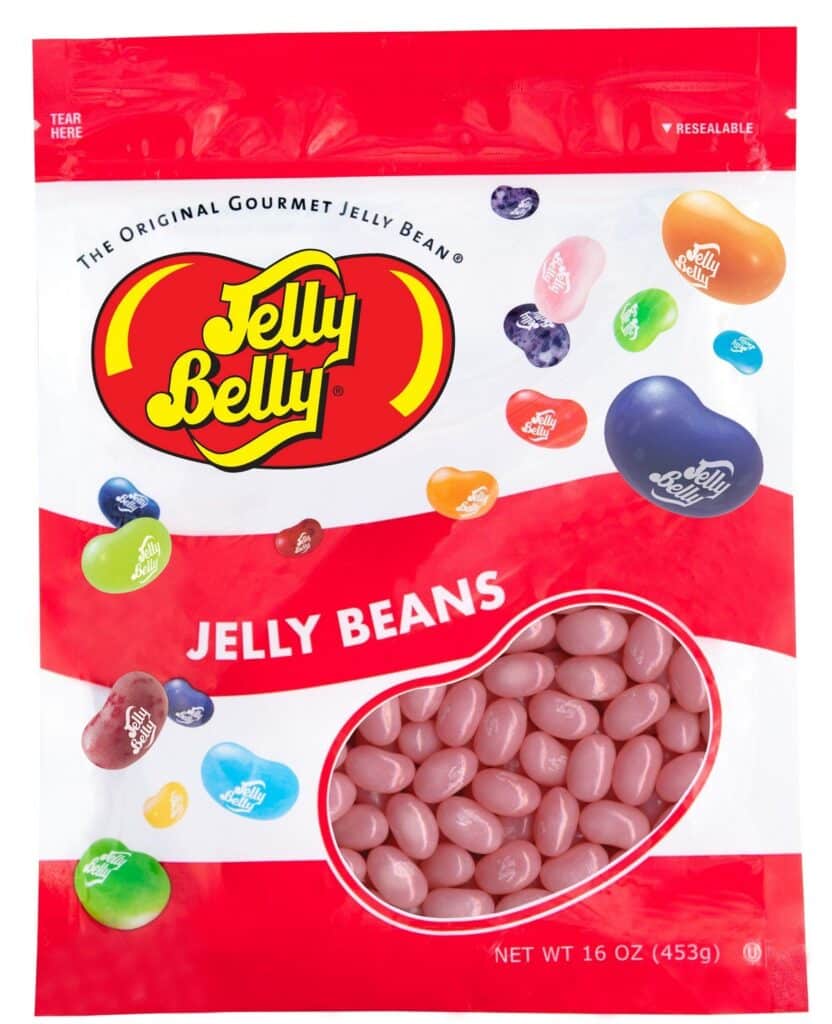
Goelitz Confectionery Company was founded in 1898 and has been a beloved candy brand for generations. In 1976, the company launched its line of gourmet Jelly Beans, which became an instant hit. Today, Jelly Belly produces more than 100 flavors of jelly beans, including some unconventional ones like buttered popcorn and black pepper. Jelly beans are the perfect pink candy for those who want to get this specific color. The brand offers a range of flavors, such as bubble gum, strawberry shortcake, and cotton candy.
The company’s trademark item, the Jelly Belly jelly bean, is offered in more than 50 different tastes, including more unusual ones like cinnamon, pomegranate, cappuccino, buttered popcorn, and chili-mango, in addition to more common ones like orange, lemon-lime, and very cherry.
The Jelly Belly Candy Company produces a variety of customized Jelly Belly jelly beans with approved ingredients, including Tabasco sauce and unusual candies that taste like eggnog and pancakes with maple syrup. Only markets outside of the United States sell some tastes, such as lychee and green tea.
5. M&M’s
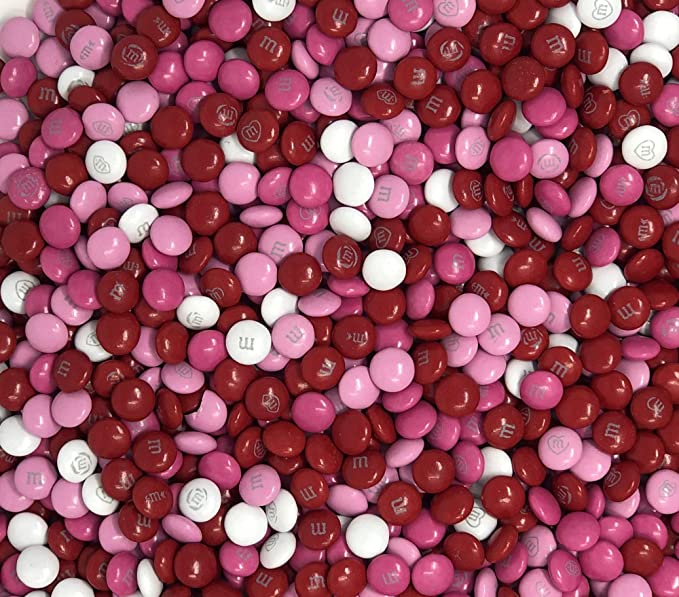
M&M’s are a type of candy-coated chocolate that was first introduced in 1941 by Mars, Inc. Pink M&M’s are a fun and colorful addition to any candy dish, gift bag, or party. One of the most popular M&Ms pink candy is one with a Wild cherry flavor.
The U.S. Army was M&M’s first significant client, using it to provide soldiers with chocolate without worrying about it melting while they were out in the field. It was regarded as a fast dessert and pick-me-up for troops who were constantly moving and frequently living in warm environments.
During this period, it was normal for confectionery businesses to make sweets for the military, but during World War II, M&Ms were only distributed to the military. Since the Army had contracted out the whole manufacture of all M&Ms, you couldn’t locate them on a store shelf or at the check-out desk.
The popularity of M&Ms among Americans after World War II led to their being imitated by several other candy manufacturers. As a result, the distinctive “M” that you see on M&Ms today was created.
6. Cotton Candy
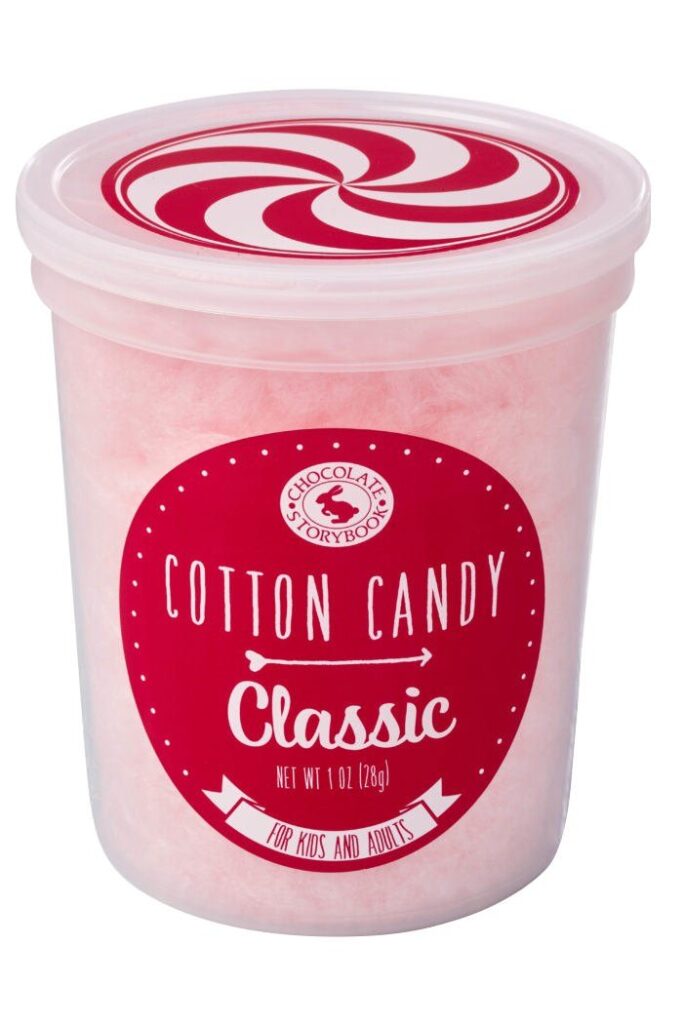
Cotton candy is made by heating sugar in a machine and then spinning it at a high speed while forcing it through tiny holes, creating thin strands of sugar that solidify as they cool. The pink color is often added through food coloring, and the pink candy is typically sold on a paper cone.
Some vendors even offer cotton candy in unique flavors like lavender, bubblegum, and champagne. Whether enjoyed at a fair or made at home with a cotton candy machine, pink cotton candy is sure to satisfy your sweet tooth.
Although sugar confections have been produced for thousands of years, cotton candy as we know it today was just recently created. European cooks created the forerunner to cotton candy: sweet gold rings that looked like molten glass. They could be created in a variety of forms and were sticky. When the sugar business developed, cotton candy was introduced.
The first electrical cotton candy machine was created in 1897 by Nashville candy makers William Morrison and John C. Wharton. They sold 68,655 boxes of cotton candy at a high price of 25 dollars, which was half the price of fair admission, at the 1904 St. Louis World’s Fair under the brand name Fairy Floss. For this machine’s protection, they got a patent. A year later, sweets shops began buying fairy floss machines. Very little has changed in terms of this mechanism since the creation of contemporary cotton candy.
7. Bubblegum
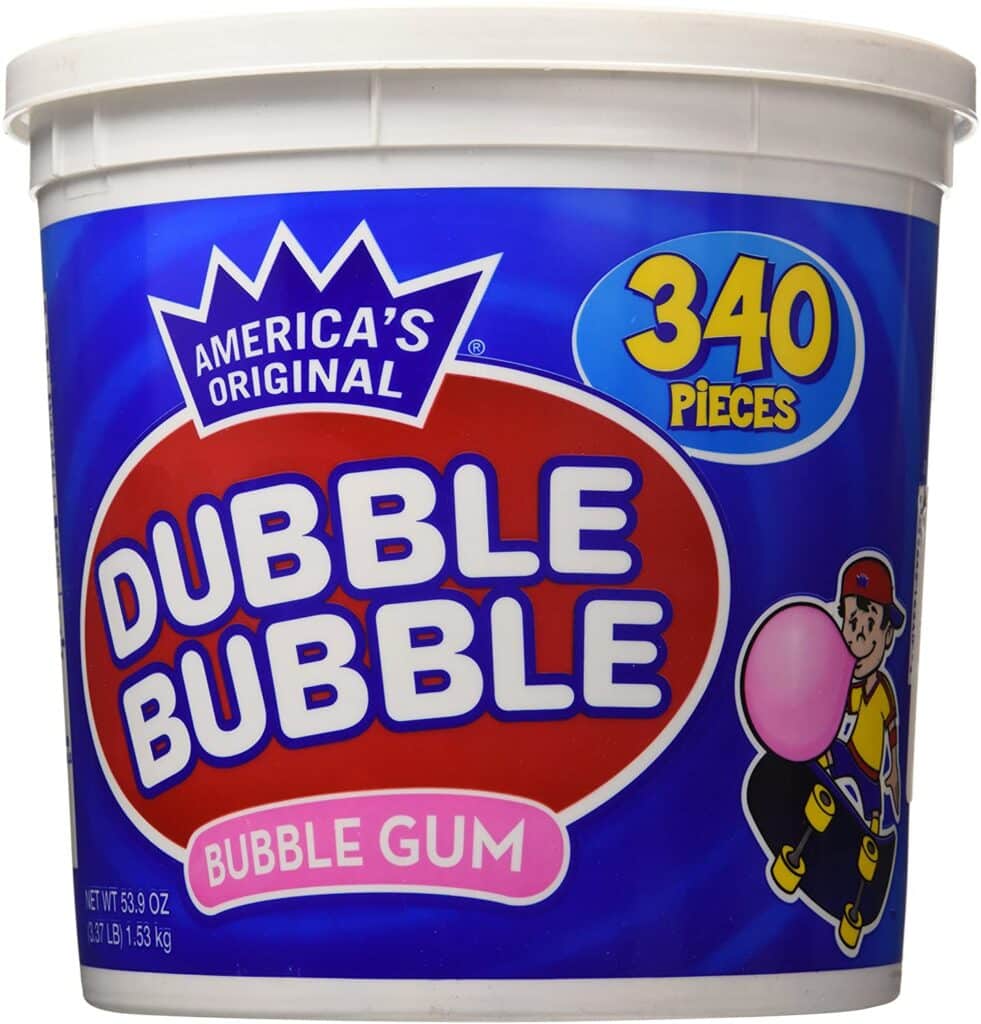
The iconic pink color of bubblegum is often achieved through the use of food coloring, which is added to the gum mixture before it is shaped and packaged. It is often associated with childhood memories and is a staple of many candy shops and vending machines.
Bubblegum was accidentally discovered by Walter Diemer, a worker at the Frank H. Fleer Gum Company when he was exploring in the lab during his breaks. Dubble Bubble was the name of the gum. Because pink was the only color offered at the time, Dubble Bubble has always been pink candy.
Whether enjoyed as a standalone treat or used as a tool for stress relief or oral health, pink bubblegum is a classic and beloved chewing gum flavor that continues to be popular today.
Bottom Line
All in all, pink candy has been a beloved treat for generations, capturing the hearts and taste buds of people everywhere. Its versatility and endurance have made it a favorite among candy enthusiasts. It doesn’t really matter which candy brand is your favorite from the 7 most delicious pink candies above, we’re sure about one thing — life is always a little sweeter with a delicious piece of pink candy in hand. So indulge your sweet tooth and savor the delightful world of pink candy!

Nato is a content writer and researcher with a background in psychology. She’s passionate about writing about the candy industry and exploring the cultural significance of sweets and treats. She believes that the stories behind our favorite snacks can reveal a great deal about our values.
Please leave a review or any memories of this snack in the comments below. Thank you!
Click here for a full A-Z list of Snacks and Candy
